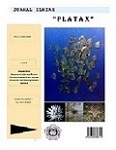Study on Public Facilities Zone Development Strategy asTourism Support in Manado Bay
DOI:
https://doi.org/10.35800/jip.7.1.2019.23404Abstract
Four urban villages in the administrative area of Tuminting District, i.e. Sindulang Satu, Sindulang Dua, Bitung Karangria and Maasing based on North Sulawesi Provincial Regulation Number 1 of 2017 concerning Coastal Zone Zoning Plans and Small Islands (RZWP-3-K) of Prov. North Sulawesi 2017-2037, will be used as a location to establish tourism supporting infrastructures. The purpose of this study is to determine the key factors for the success of the strategy for public facilities zone construction in Manado Bay, by taking into account the environmental, economic and social aspects. The study was conducted from September 2018 to March 2019. Data collection was carried out through in-depth interviewing techniques to 15 key people selected based on pentahelix. Data analysis employed SWOT and Strategic Analysis and Choice (SAC) to determine the alternative strategy. The results found six priority strategies as follows: (1) synchronizing the regulations for Coastal Zone spatial planning, (2) evaluating the coastal spatial planning regulations with regional development planning documents, (3) conducting socialization for coastal communities, (4) increasing the prosperity through small-scaled fishermen empowerment ( 5) developing 3A (increase, accessibility, and amenity) to support the tourism by increasing tourists’ visit, and (6) Improving the quality of human resources.
Key words: RZWP-3-K, Public Facilities Zone, Pentahelix, SWOT.
Â
ABSTRAK
Empat kelurahan yang masuk dalam wilayah administrasi Kecamatan Tuminting yaitu: Sindulang Satu, Sindulang Dua, Bitung Karangria, dan Maasing berdasarkan Peraturan Daerah Provinsi Sulawesi Utara Nomor 1 Tahun 2017 tentang Rencana Zonasi Wilayah Pesisir dan Pulau-pulau Kecil (RZWP-3-K) Prov. Sulut Tahun 2017-2037, akan dimanfaatkan sebagai lokasi pembangunan infrastruktur penunjang pariwisata. Tujuan penelitian ini untuk menentukan faktor-faktor kunci keberhasilan sebagai strategi prioritas untuk pembangunan zona fasilitas umum penunjang pariwisata di Teluk Manado, dengan memperhatikan aspek lingkungan, aspek ekonomi dan aspek sosial. Penelitian dilakukan dari bulan September 2018 sampai Maret 2019. Pengumpulan data dilakukan dengan teknik wawancara secara mendalam (in depth interview) kepada 15 key persons dipilih berdasarkan pentahelix. Metode analisis data untuk menentukan strategi alternatif dengan menggunakan SWOT dan Strategic Analysis and Choice (SAC). Hasil penelitian menunjukan ada enam strategi prioritas yaitu: (1) melakukan sinkronisasi peraturan perundang-undangan bidang penataan ruang daerah pesisir, (2) melakukan sinkronisasi peraturan penataan ruang daerah pesisir dengan dokumen perencanaan pembangunan daerah, (3) melakukan sosialisasi kepada masyarakat pesisir, (4) meningkatan kesejahteraan melalui pemberdayaan nelayan kecil, (5) meningkatkan 3A (atraksi, aksesibilitas, dan amenitas) sebagai penunjang pariwisata untuk meningkatkan kunjungan wisatawan, (6) peningkatan kualitas sumber daya manusia.     Â
Kata Kunci: RZWP-3-K, Zona Fasilitas Umum, Pentahelix, SWOT.Downloads
Published
How to Cite
Issue
Section
License
COPYRIGHT
Authors who publish with this journal agree to the following terms:
Authors hold their copyright and grant this journal the privilege of first publication, with the work simultaneously licensed under a Creative Commons Attribution License that permits others to impart the work with an acknowledgment of the work's origin and initial publication by this journal.
Authors can enter into separate or additional contractual arrangements for the non-exclusive distribution of the journal's published version of the work (for example, post it to an institutional repository or publish it in a book), with an acknowledgment of its underlying publication in this journal.
Authors are permitted and encouraged to post their work online (for example, in institutional repositories or on their website) as it can lead to productive exchanges, as well as earlier and greater citation of the published work (See The Effect of Open Access).






































